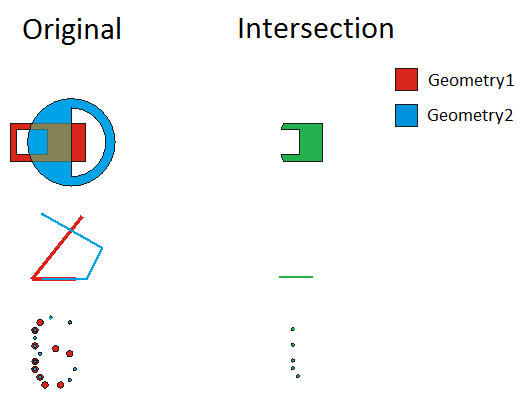public Geometry Intersection( Geometry geometry1, Geometry geometry2, GeometryDimension resultDimension )
Public Overloads Function Intersection( _ ByVal geometry1 As Geometry, _ ByVal geometry2 As Geometry, _ ByVal resultDimension As GeometryDimension _ ) As Geometry
Parameters
- geometry1
- The first geometry.
- geometry2
- The second geometry.
- resultDimension
- Specifies the required dimension of the output. For example, if geometry1 is a Polyline and geometry2 is a Polyline and they cross each other at two points, then the intersection is a Multipoint. In this case, if you want the returned geometry to be the Multipoint where the input geometries intersect, use GeometryDimension.esriGeometry0Dimension. Note that if the geometries intersect at one point and GeometryDimension.esriGeometry0Dimension is used, the returned geometry will be a Multipoint with one point. In the above example, if GeometryDimension.esriGeometry1Dimension is passed, an empty Polyline will be returned because the geometries intersect only at points. If, on the other hand, the two polylines overlap, then a non-empty Polyline will be returned. If resultDimension is GeometryDimension.esriGeometryNoDimension, then the lowest dimension of the input geometries will be used.
Return Value
A geometry that represents the intersection of the two input geometries.
